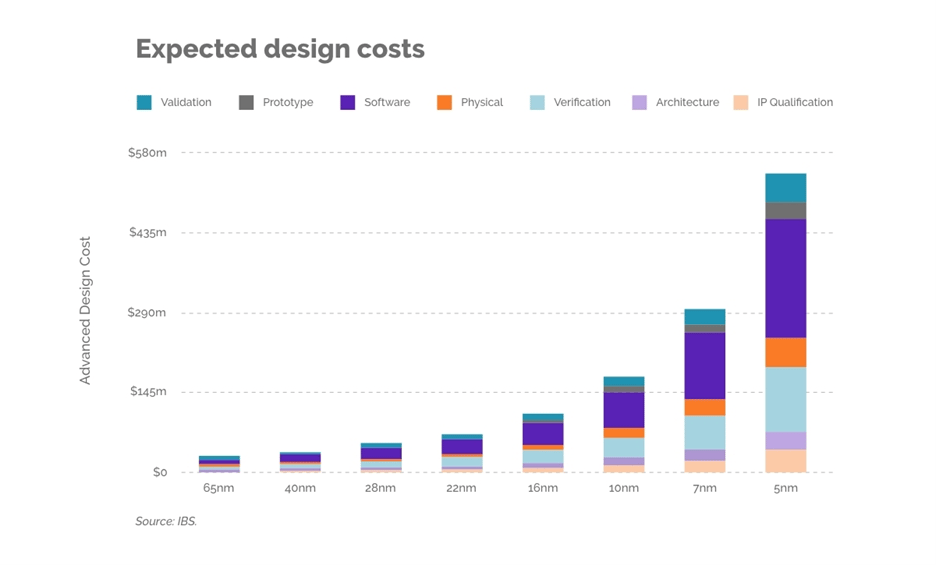
The semiconductor shortage continues to ravage many sectors. With its reliance on electronics for driverless technology and safety innovation, the car industry has been particularly badly hit.
We've seen production slow over the last few years, factories close, and critical releases put on hold due to a global lack of chips. But the current downturn is stimulating investment in semiconductor innovation that will reshape the industry in the future. Are you ready to step up?
Why the chip shortage?
The shortage began in 2020 due to a toxic mix of trade wars, Covid, various natural disasters and planning missteps by major chip producers. More recently, the crisis in supply chains has been compounded by events like the Suez canal blockage and the war in Ukraine, which now threatens the supply of metals and neon vital to chip fabrication.
Shortage continues to depress car production.
Ford has lost US$3.1 billion in revenue due to the international chip shortage, while UK car production fell by 33% in March 2022 (a low not seen since 2009). The lack of semiconductors also caused Volkswagen to remove features from several models this year, while a number German factories had to close down production altogether. Meanwhile in Japan, Honda has slashed production by 50% as the lack of chips scuppered their manufacturing plans.
What’s more, it seems there won’t be much relief in the short term. Commentators and industry experts are predicting the chip shortage will stretch into 2023 and well beyond.
Responses to the crisis
There have been various responses to the crisis.
Desperation has ended, for some, in deception and theft with hundreds of component buyers scammed by fraudulent websites taking advantage of the crisis.
But there has also been a new drive for intellectual and commercial ownership of localised chip technology and fabrication to de-risk supply chains in the future.
There’s been extraordinary levels of investment in fabs around the world and particularly in Western countries keen to avoid over-reliance on the global supply chains that fell apart in the Covid crisis. Bosch opened a 1 Billion Euro plant near Dresden in June 2021 intended to address the crisis:
"Every chip that we make here in Dresden is one chip less that is lacking” said Bosch board member Harald Kroeger in a recent interview with Reuters.
Dreams of digital sovereignty and freedom from IP restrictions
In Europe and America the future of ‘digital sovereignty is being supported by the ‘CHIPS for America Act’ and the European Chips Act. Both promise considerable investment and protection for native research, innovation and manufacture.
And while the Chip shortage has caused problems for car makers and others, it is spurring and stirring investment at the grassroots level of chip design.
The car industry is eager to ramp up the rate of innovation following successive years of lost revenue, but they also want to avoid their reliance on distant foundries and the restrictive IP of major chip developers.
Michigan professor Erik Gordon, therefore, predicts that in the future: "We're going to see car manufacturers designing their own specialized chips and either manufacturing them themselves or arranging to have them manufactured."
More stimulation for grassroots innovation?
Here is a new opportunity for smaller, more agile Chip designers to help these companies innovate, to support ambitious aims for more EV and driverless car technology that governments want to improve road safety, congestion and pollution levels.
To deliver on these goals the industry requires ever smaller and more powerful chip architecture and the new possibilities of RISC-V are there to deliver just that. But it’s going to take time and money for chip developers to marshall this technology, verifying and validating against the stringent standards of ISO 26262.
Ambitious fabless semiconductor companies should be gearing themselves up to make the most of these commercial opportunities. But they need to do it now so they’re ready for renewed foundry capacity to kick in, and take advantage of pent up demand.
Agility and focus will win the day
While there is opportunity in developing for automotive there is enormous risk, complexity and expense in involved. It is no secret that the cost of chip design is ballooning and the smaller chips get (and the more risk involved in their use cases) the more expensive their design, validation and verification become. Just as a reminder, here’s how the costs of chip development are set to rise with their complexity:

3 reasons governance is vital in automotive chip development
Those who are preparing themselves for entering this market need the tools for document control to balance free thinking and innovation, with tight compliance and cost control.
1. Innovation
Complexity is calling for feats of reimagination, creativity and experimentation in the chip design business.
Companies need the tools for close and intense collaboration on coding, design and specification documentation. They need the tools for sharing files of all kinds in targeted ways comparing long documents side by side, pointing up additions, updates and reader notes to be actioned.
Documents and ideas need to flow freely with speed expedited through alerts, notifications and reminders. At the same time, information needs to be shared instantly and securely with third party and international collaborators.
2. Functional safety - gaining ISO 26262
But developing for AV also means practically eliminating the risk of failure in your end products through the application of tight design and document control. ISO 26262 outlines requirements for specification gathering, design, implementation, integration, verification, validation, and configuration of this technology in order to meet rigorous functional safety standards. Anyone participating in this market needs the digital tools that can control their documentation and evidence all of their quality decision making for future auditors. All this while keeping the spark of innovation alive.
3. Cost control
As complexity, costs and timelines of chip development spiral, the companies who will survive are those that can most effectively control wasted time and resources while achieving compliance most robustly and efficiently.
A tightly controlled development process, underpinned by the right document management tools, will naturally close down the dead-ends, distractions, omissions and mistakes that end in wasted time and non-conformances in your end products.
In keeping your business laser-focused on requirements and how they are turned into verified and validated products, document control software can bring new precision to everything you do.
A Lean document management system will ensure you are capturing what is relevant and necessary to build a product that meets requirements, evidences compliance and nothing else.
As costs rocket and complexity increases, this kind of digital governance could save you tens of millions of pounds and speed your route to a market that is opening up in new and exciting ways.



%20(1).webp?width=133&height=76&name=ISO%20IEC%2027001%20(1)%20(1).webp)